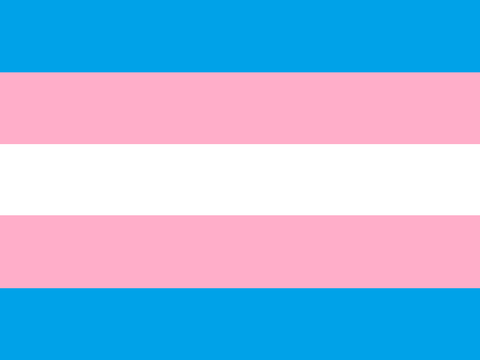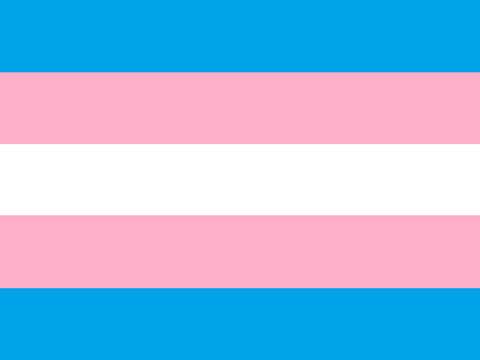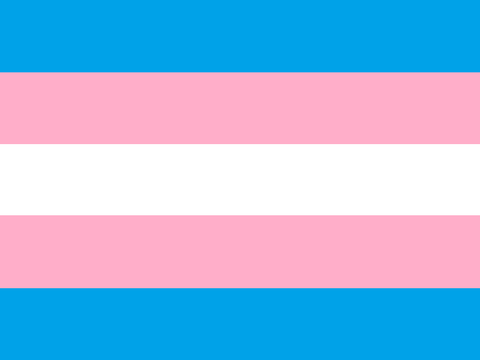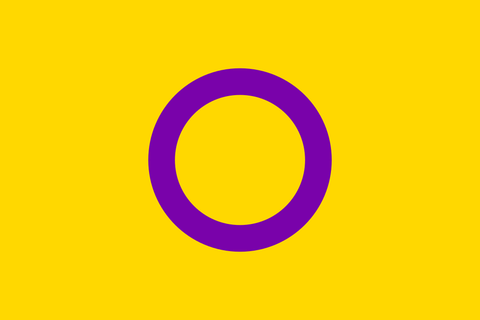Locked up at home for a month — Tom’s story of conversion abuse in Singapore
Tom’s parents enlisted the help of their church to perform abusive acts on their son — all with the hopes of turning him straight.
| Updated on
Warning: This article describes psychological abuse, domestic abuse, and trauma. Help is available.
In recent months, the topic of “conversion therapy” piqued public interest. Heated arguments were made for and against “conversion therapy” programmes, but few featured the voices of abuse survivors. Over the past few weeks, we’ve spoken to many brave individuals who were willing to lend their experiences and voices to this public discourse.
Tom’s story is the third in our 4-part series that reveals the reality of “conversion therapy” in Singapore. Read the other stories here.
* * *
Tom had been wandering around his neighbourhood for the past 10 minutes. His heart was racing, and the awfully quiet night made it thud even louder in his ears. He looked around and saw only a handful of people at the nearby bus stop.
Tom wasn’t sure where he could go. That was his first mistake: escaping from his parents without a plan in mind. He was 16, and had been thinking a lot about running away from his abusive family, but that really wasn’t the same as making a plan.
Several of his church’s representatives came down to his house earlier that night. But it wasn’t a social visit — they were there to perform another exorcism on him. It was the second time they’ve performed it on Tom, and it wasn’t any less traumatic than the first. They chanted in a trance-like manner, shouted at him, and slapped him countless times to “chase the devil away”.
The exorcists, which included his family members, were taking a short break and started chatting among themselves. They were distracted, and Tom saw an opportunity to escape. He made a dash for it. Mistake number two: there were now roughly 10 adults searching the neighbourhood for him.
Tom swiped through his phone contacts to find friends he could turn to, but every scenario that he played in his mind ended up with him being returned to his parents. By his estimation, he should have a few minutes more before his pursuers would catch up to him. Except he was wrong — his parents knew exactly where he was, and the entire search party was just around the corner. Tom’s final and most fatal mistake was not disabling the tracking app on his phone.
The next few moments were a blur. Tom heard the rushed footsteps of a group of people, then chaotic shouts. He tried to run away, but angry hands grabbed him before he could. They snatched his phone and wallet, and began hauling him back home. Tom shouted for help — or at least he thought he did. The people at the bus stop stirred to look at the commotion. Nobody stepped up to help him.
Tom’s friends and classmates would stop hearing from him for the next month.

“I really thought that someone would help me that night, but no one came to my help. It was really disappointing.”
Tom grew up in a conservative Christian family. His family attended church services regularly, and his parents became close with the pastor over the years. His extended family was also deeply religious: his uncle Peter, who attends a different church, would often speak at services even though he’s not a pastor.
Tom knew that he is gay from a young age, but had to keep it from his family. He knew that his church was staunchly anti-LGBTQ, and figured that his devout parents held the same view.
His parents were very controlling, too. Since he was a boy, they would confiscate his phone regularly and force him to unlock it so that they could check his messages. Tom wasn’t sure what they were looking for, but as he grew older, he slowly realised that that wasn’t something most parents would typically do.
As puberty hit him, Tom started living a double life. He began meeting other guys when he was 15, but had to hide it from his family and church friends. School wasn’t particularly LGBTQ-friendly either, so Tom didn’t have many people he could confide in. Deep down, he knew that he wouldn’t be able to keep his sexuality hidden for long.
Tom was 16 when his parents found intimate messages and photos that he exchanged with other guys. They were furious and blamed him for being gay, as if people could choose their sexuality. Tom was indignant, too, and argued back at his parents: the scientific consensus was that human sexuality exists on a spectrum. But his parents refused to listen, and the angrier they were, the bigger and hotter Tom’s inner rebel grew.
Many fights — both verbal and physical — broke out between Tom and his parents. They started tightening their grip around him, and banned him from leaving the house outside of attending school. But each time they fought and each time Tom retaliated, he felt a little more sure of his sexuality. In a naive way, Tom thought that he could win the fight against his parents. Little did he know that he would soon have to go up against the members of his church.
The traps that his family had laid were only obvious in hindsight. Sarah, a close church friend, asked Tom out for lunch one day. His parents gave him permission to leave the house without much fuss. But instead of bringing him to a restaurant, Sarah drove him to an unfamiliar church, different from the one they attend. When they arrived, she confessed that her plan all along was to introduce Tom to that church’s counsellor. She asked Tom to speak to him.
The counsellor seemed nice at first, and promised Tom that their conversations would be confidential. He encouraged Tom to talk about the photos and messages that his parents had found on his phone, as well as his previous relationships and encounters with guys. Tom confided in him, but as soon as their session was over, the counsellor told Sarah about everything they talked about. She quickly relayed the details to Tom’s parents and their church’s leadership. It became clear to Tom then that this was an elaborate plan to wrestle out in-depth and private information from him.
“I trusted the counsellor, but he told Sarah everything I told him. She told my mum, and then soon enough the rest of my church knew about it too.”
The first exorcism session happened shortly after. Uncle Peter turned up at his house one day, accompanied by Tom’s pastor and several fellow churchgoers. Once the adults were gathered around Tom, Peter announced that Tom was under the influence of Satan, and said that they needed to get rid of the devil inside of him. He snatched Tom’s phone and wallet away, and asked his father to pin him to the ground.
Tom was a lanky teenager, and his father, a heavily-built man. So when he pushed him to the ground and slammed his full weight on Tom’s legs, his knees smashed straight onto the ground. Pain shot through Tom’s legs, and he began to scream and cry out for help. Peter, entranced by the ritual he was about to perform, saw this as a sign that Tom was possessed. “Look, he’s really the devil!” he shouted to the others in the room, who murmured in agreement.
They began chanting and praying over Tom, as his father exerted even more pressure on his already bruised knees. Tom’s memories over his traumatic exorcism sessions were foggy, but a few details remain clearly etched in his mind. Peter would slap Tom on the face every now and then. The pastor would keep asking Tom to calm down. His father would pin him firmly onto the ground. The whole room of adults would twirl hysterically around him and blend into a blur, their frenzied voices echoing thunderously in the room.

And before he knew it, the session was over. The only thing that changed about Tom was a newly developed fear and resentment he had for the people he grew up with. He witnessed the lengths to which they would go to change his sexuality, and understood just how out of his depth he was against his parents and church members.
After the first exorcism, his parents followed through with their extensive “conversion therapy” plan. They forced him to attend a perverse amount of “counselling sessions”. In a week, Tom would see 3 different counsellors, none of whom were LGBTQ-affirming, and all of whom would divulge to his parents the details of their conversations. Tom’s parents would drive him to and from each session to make sure that he didn’t have the chance to meet anyone else outside of school. Once they got home, they would confront Tom with what the counsellors had told them, and would often beat him up in resentment. The counselling sessions, Tom grew to realise, were not for his well being, but were instead part of his parents’ plans to mentally exhaust and condition him.
Tom’s parents also installed new padlocks on their house door and gate to make sure that he couldn’t run away. His family stopped bringing him to church, but instead brought the church sessions home. His pastor, as well as several churchgoers, would come over every week to hold bible lessons and prayer sessions with his family. On one occasion, a churchgoer even scolded Tom for not coming out to them earlier, and blamed him for wasting their time — time they could have perhaps used to change his sexuality. Over time, his house felt more like a prison than a home.
“People think that it’s easy to sit through counselling sessions, but it’s hard to describe what it’s like. Your parents have turned on you, your brother has turned on you, your friends couldn’t help you. You would cry every night before going to sleep. And you would wake up, and it’s another day of torture.”
When his parents and church organised their second exorcism session, Tom tried to escape. He managed to run away, but was soon tracked down and hauled back home. After that failed attempt, his parents turned even more extreme. They took away his phone and locked him up at home for a whole month, forcing him to skip school.
It was a mind-numbing existence, to say the least. Tom wasn’t allowed to watch TV; his parents would whip him with a cane if they caught him doing so. And since his phone was taken from him, Tom had no access to the internet either. All he could do was to read books, attend “counselling sessions”, and sleep. It was psychological abuse, as Tom was forcefully isolated from his friends, classmates, and the rest of the outside world.
When his school called home to check in on his absenteeism, Tom’s parents told them that they wanted to drop him out of school. They made sure that Tom never got the chance to speak to his teachers, so that only their version of events could be heard by the school. But because they couldn’t provide any valid reason for stopping his education, the school issued an ultimatum and forced Tom’s parents to start letting him attend school again. After a month of captivity and isolation, Tom was finally allowed into the outside world once more.
As soon as he was released, Tom began planning his second escape from his parents. This time, he learnt from his past mistakes. He searched on dating sites for people who could let him crash at their place, because he knew that he couldn’t stay with his friends. He decided to escape right after a school day ended, which would give him a larger window of time before his parents would realise that he’s missing. Tom packed a small bag, and included his school necessities because he still wanted to continue going to school. He turned off his phone’s tracking app, and disappeared from his parents’ lives one day after school.
Tom would spend his mornings at school, and his evenings and nights at a stranger’s house. He stayed at the same house for only a few days, then moved on to the next one. A week went by without much of a hitch. Until one day, when Tom found the police waiting for him at his school’s gates after class. They brought him to the station and interrogated him for running away from home. It turned out that his parents had just made a police report on him, and painted a picture of an ungrateful, rebellious teenager to the police.
It was the first time Tom was in a police station, and the first time he was interrogated. The police officer shouted at him, threatened to charge him, and told him that his parents were only looking out for his well being. Tom felt extremely distressed, and didn’t dare to tell the police what his parents had done to him a month ago. After an hour or so, he was released from the police station and told to go home.
Tom continues to live with his parents today.
“When I think about what they did to me… it’s a huge struggle for me. I really hope that no one will have to go through that.”
Tom’s story reads like a nightmare to queer teenagers in Singapore who live with anti-LGBTQ parents. He was harassed by his church members, physically abused by his uncle, and psychologically tortured by his parents. Yet Tom was the one being visited and questioned by the police for escaping abuse. No one faced any consequences for their involvement in the exorcism sessions.
It’s worth noting at this point that Singapore’s domestic abuse laws permits parents to inflict punishment on their child, so long as it’s “lawful” and done to “correct” the child’s behaviour (s64). And since the High Court ruled in March 2020 that society disapproves of “homosexual acts”, Tom’s parents — and every other homophobic parent — could possibly get away with their abusive acts if they claimed that they were done with the intent to “correct” Tom’s homosexuality.
We need tougher regulations to protect teenagers from abuse.
Take action against “conversion therapy” today
“Conversion therapy” is a public health issue. We should continue to defend the right of people to practice their religion and beliefs, yet strike a balance to ensure that the health and safety of individuals aren’t disproportionately affected by any practice, especially those that are known to cause deep harm.
Many countries in the world have already taken action to curb “conversion therapy”. Taiwan has fully banned “conversion therapy” practices, while Germany has done so for minors. Other countries such as Canada, Israel, New Zealand, and the UK are considering legislation that would make them illegal.
In June 2021, the Singapore Psychological Society — for the first time since its inception in 1979 — officially discouraged the use of “conversion therapy” on LGBTQ+ individuals. It acknowledged the harmful effects of such practices, and recommend medical professionals to use therapy that affirms the individual’s orientation or identity.
We’ve prepared an email template that you can send to relevant ministries (Health, Law, Home Affairs), as well as members of the opposition party, asking them to protect teenagers from the harms of “conversion therapy”.
If the button doesn’t work for you, use this document instead.
We propose the following regulatory changes to help safeguard minors from the harm of “conversion therapy” in Singapore:
- Require any person who practices “conversion therapy” to give participants a warning message that “conversion therapy” has no scientific basis and may not work. This would be similar to how tobacco products are mandated to contain health warning labels.
- Prohibit advertisements of “conversion therapy” practices in Singapore. This would be similar to how tobacco products are barred from all forms of advertising in the country.
- Prohibit medical professionals from suggesting, endorsing, or prescribing “conversion therapy” practices. Although the Health Minister has said that medical professionals are expected to practice according to “evidence-based best practice and clinical ethics”, this stance isn’t a prohibition of the harmful practices of “conversion therapy”.
- Amend regulations to close the loophole on domestic abuse laws, by explicitly categorising “conversion therapy” as a form of domestic abuse.
- Amend regulations to explicitly include “conversion therapy” as a form of ill-treatment under our child abuse laws.
- Outlaw “conversion therapy” practices.
If the button doesn’t work for you, use this document instead.

Help is available
If you’re currently struggling with your sexuality or gender identity, help is available.
A social service helpline that supports LBTQ+ women in Singapore.
- WhatsApp: +65 8788 8817 (check operating hours here).
An LGBTQ+ support organisation that provides affirming counselling services.
- WhatsApp counselling: +65 8592 0609 (check operating hours here)
- Email counselling: CARE@oogachaga.com (typically responds within 72 hours)
A local trans shelter that runs trans-focused services.
- Temporary stay shelter: Find more details on their website
- Professional counselling: Find more details on their website
An emergency helpline that provides confidential emotional support to individuals facing crises.
- 24-hour hotline: 1800 221 4444
- Email counselling: pat@sos.org.sg
* * *
This personal story was contributed by Tom, who endured “conversion therapy” at home with the involvement of his church members. We withheld the real names of people and organisations in the story to protect Tom’s identity and safety. The illustrations in this article do not represent how Tom looks in real life.






